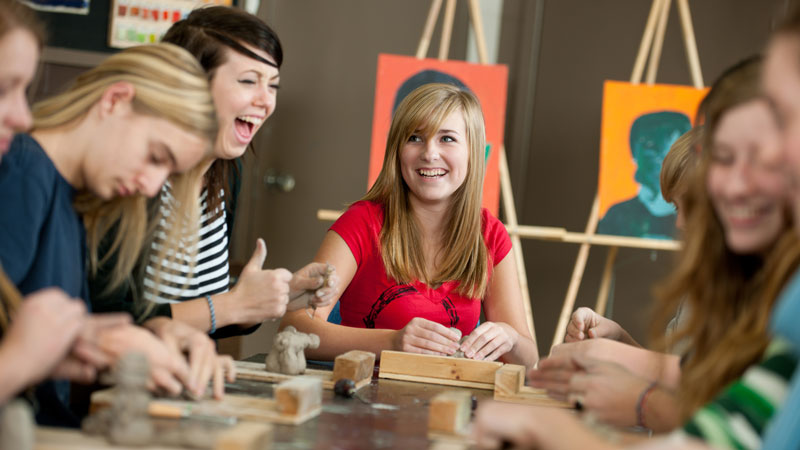
Sure, there are times when we are actively aware that we are learning – when we are “trying” to learn. But there are also times, when learning just happens.
Why is it that some things seem easy to grasp, while others seem impossible? Why do some bits of information “stick”, while others seem to get lost.
While we often think about what we are learning, we seldom consider how we are learning?
Think for a minute about something specific that you have learned. It could be a skill or a bit of knowledge. Maybe it’s something like how to ride a bike, throw a ball, or tie a shoe.
Can you remember how you learned this skill? Did it come easily, or was it a challenge?
Successful learning, whether it is related to drawing and painting or not, is often dependent on your own personal learning style. We tend to learn more efficiently if what we are learning is taught in a manner that matches our style of learning.
Therefore, it is important to recognize your own learning style so that you can find resources and teaching styles that provide you with the best chance for success.
If you are reading this, then you’re most likely interested in learning how to draw and paint. Or perhaps you’re interested in teaching drawing and painting more effectively. Either way, we’ll look at learning styles and how they relate to learning art efficiently.
Let’s first look at learning styles from a learner’s perspective and determine how to identify your learning style(s).
How to Identify Your Learning Style
Before we look at the most popular learning styles, it’s important to note that most of us learn best when a combination of teaching techniques are used. So, even though one of the following learning styles will be most effective for you, it is a combination of content delivery that leads to the highest levels of success.
Learning styles can be simplified into three groups, Observational, Cognitive, and Conditional.
Observational Learners
Instead of learning from personal experiences, observational learners learn from watching and listening to the actions of others. They note the outcomes/consequences from the actions of those they observe.
Observational learning occurs when an expert is involved. An “expert” can be anyone that is highly qualified or someone who is simply more experienced than the learner. In educational philosophy, “experts” are referred to as “models”.
It’s safe to say that when it comes to learning art processes, observational learning plays a major role. Even though experimentation is often involved, we are typically first exposed to a technique, medium, or subject matter through observational learning. We tend to watch someone use the medium or execute the technique before using it ourselves.
Observational learning has its advantages and disadvantages.
One advantage to observational learning is that the learner is able to learn from the model’s experience without having any of their own. A simple example can be seen with mixing colors. An expert (“model”) can demonstrate color mixing with physical paints, demonstrating that when yellow is mixed with blue, the result is green. This demonstration gives the learner a visual “picture” of the concept as well as a clear outcome/consequence. Without modeling, the learner would be left to experimentation.
One clear disadvantage to observational learning is that “incorrect learning” can occur.
So, what is “incorrect learning”? Incorrect learning happens when you learn a bit information or a process the wrong way the first time that you are exposed to it. If the experience is impressionable enough, it is hard to learn the correct information or process moving forward.
Incorrect learning can have lasting effects.
Perhaps you can recall a time when you learned something incorrectly. Maybe it was something that you learned when you were younger and you still struggle with today.
For me, it is the placement of the letters “i” and “e” in words. The problem is that I learned the phrase, “‘I’ before ‘E’ except after ‘C'”, and accepted it as a rule. So my entire life I have struggled spelling words like “science”, “weird”, and “their” as these words do not follow the rule.
It would have been better for me to never have learned that silly poem. But to this day, I still find myself spelling “thier” “their” incorrectly. This is a clear example of incorrect learning.
Another form of incorrect learning happens when the expert (“model”) is not a very good one. We’ve all seen children pick up the behaviors of their parents. We also know that sometimes the behaviors that are picked up from their parents isn’t always good.
Observational Learning and Art
Unfortunately many art instructors at the higher education level do not even practice observational teaching. Most of the professors I had in art school never once did a demo. Instead, an assignment was given, time passed, and then it was brutally critiqued.
I’m sure that you’ll agree that this is an absolutely absurd way of teaching art. Yet, for some reason it is excepted, and is the norm within even the most “prestigious” art programs.
I did have one or two professors that did demonstrations. Needless to say, I learned the most from them.
It’s not a surprise that videos appeal to observational learners.
It is my opinion that no matter what type of learner you are, observational learning must be a foundational part of your art education. Find a good expert, and soak up everything that you can.
Cognitive Learners
Cognitive learning happens when practice and memorized processes are involved. When we repeat processes over and over again, we tend to learn them. Some people learn best when repetitive processes are in place.

An example of cognitive learning is those endless math problems that you were assigned for homework every night in the fourth grade. The thinking behind this torture was that if you did fifty multiplication problems, then you would learn the process forever by repeating it over and over again. (And so to this day, I have no problem multiplying – I reach for my phone and open the calculator app.)
Most people who are cognitive learners prefer to learn processes and techniques using a step by step approach. They usually want to know every step of the process and everything about that particular step. They are analytical learners.
Cognitive Learning and Art
When it comes to art, cognitive learners need instructions. Step by step instructions are best.
For this reason, many cognitive learners are drawn to books. Books are concrete sources of instruction that can be studied over and over again. Each step of the process is laid out for the cognitive learner.
With a book, the cognitive learner can skip ahead and see the outcome, then study each step of the process carefully. The cognitive learner doesn’t really mind if the outcome of the process matches the example. In fact, the more that the outcome is like the example, the better.
Once the instructions have been obtained and studied, the cognitive learner actively participates in the process – often repeating the process over and over again until it is mastered.
Conditional Learners
Conditional learning is sometimes based on environmental factors. For example, when the high school bell rings, everyone knows that it’s time to change classes. Students will naturally stand up and make their way to the next class. However, hearing the same bell in a totally different environment would not cause people to “move to another class”. (In fact, it may cause people to look very confused.) The environmental factors play a role in the resulting learned behavior.
Conditional learning also happens when an experience leads to an outcome. Many times, the behavior leads to either a punishment or a reward. Behaviors that are rewarded are repeated while those that are punished are avoided.
Conditional Learners and Art
Conditional learners are the experimenters. They are the learners that start the activity before all of the materials are even passed out. Conditional learners learn from their own experiences. When their “experiments” are successful, they continue them.
They are content to take materials and then “see what happens”. Of course, they learn from their experimentation whether or not the outcome is successful or a complete catastrophe.
Conditional learners typically gather bits of information about a technique or medium and form their own conclusions about how they should be implemented. Usually a painfully small amount of “research” is done before action is taken.
Conditional learners are generally the art students that make discoveries. Because of their fearless indiscretion, they are far more likely to discover a new way a medium or technique can be implemented.
Conversely, conditional learners are also far more likely to fail. Most accept failure as part of the process of creating, so it is not much of a hinderance to progress.
Resources and Learners
While we generally learn best when a combination of learning styles are addressed, one of these styles will resonate with you as your most effective way of learning. In order to make the most of your progress, you need to identify and understand the style that suites you and seek resources that match.
To review which resources match learning styles…
Observational Learners – videos, live demonstrations, presentations
Cognitive Learners – books, ebooks, written instructions
Conditional Learners – experimentation with materials
Teaching Art to Multiple Learning Styles
As a teacher, understanding the learning styles of your students is incredibly important. A classroom is filled with students that all have different learning styles. It is your job as a teacher to reach all of your students, so naturally every learning style should be addressed in your lesson.
This means that the structure of the lesson should include resources and activities that cater to multiple learning styles.
Here’s a look at how this may be accomplished in an art classroom…
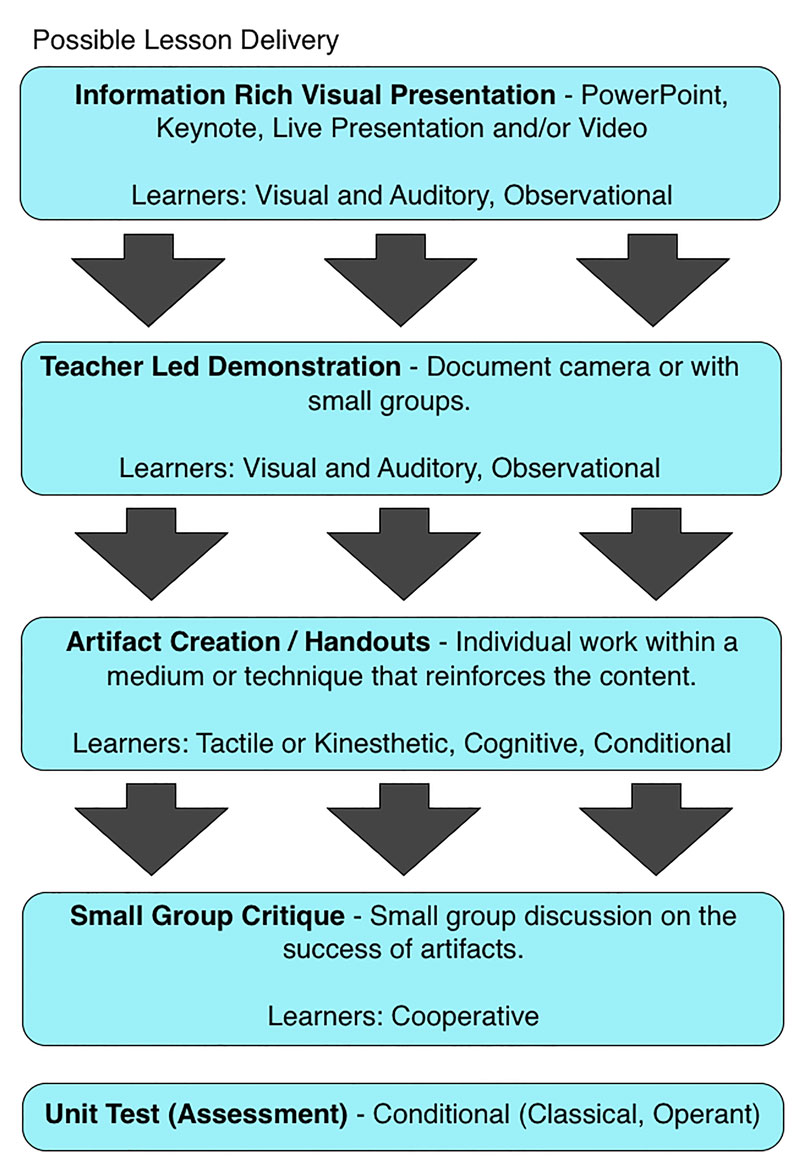 Here’s a link to a PDF of the above image… PDF Download
Here’s a link to a PDF of the above image… PDF Download
With a video, presentation, or live demonstration, the lesson could begin by addressing the needs of observational learners. This initial introduction should clearly communicate the process or technique visually.
The presentation is followed by the creation of an artifact that addresses the needs of the conditional learner allowing them to experiment with the medium or technique.
As the activity begins, a handout that features a step by step instructional guide on the process, medium, or technique is included. This addresses the needs of the cognitive learner.
At the conclusion of the assignment, the success of the artifacts can be discussed as a group, reinforcing the concepts of the lesson. For further reinforcement, a quiz or test can be administered allowing students with less “artistic skill” to be successful.
Summing it All Up
Fortunately, learning art is mostly a fun activity. Understanding your learning style allows you learn more efficiently making the process of becoming a skilled artist even more enjoyable.
How do you learn best?
If so, join over 36,000 others that receive our newsletter with new drawing and painting lessons. Plus, check out three of our course videos and ebooks for free.
Lesson Discussion
Comments are closed.

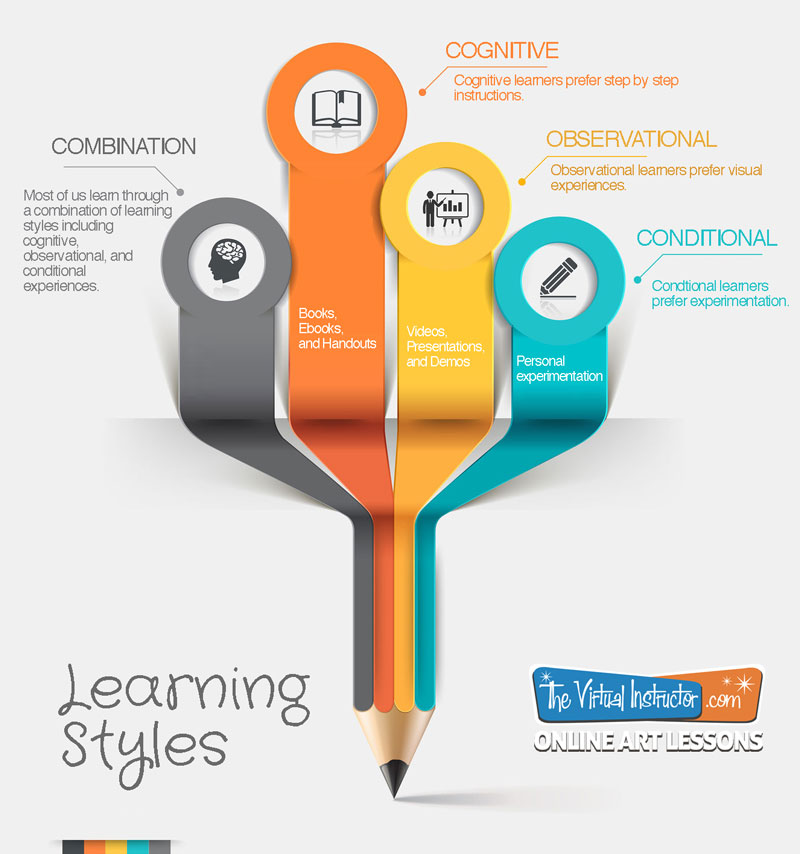

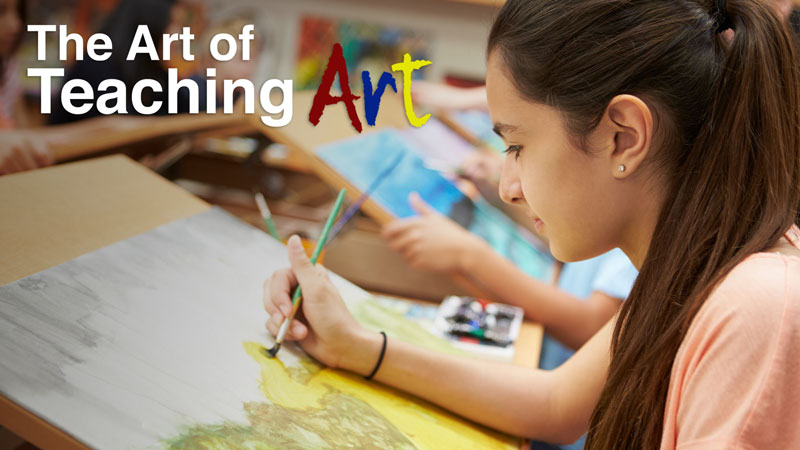
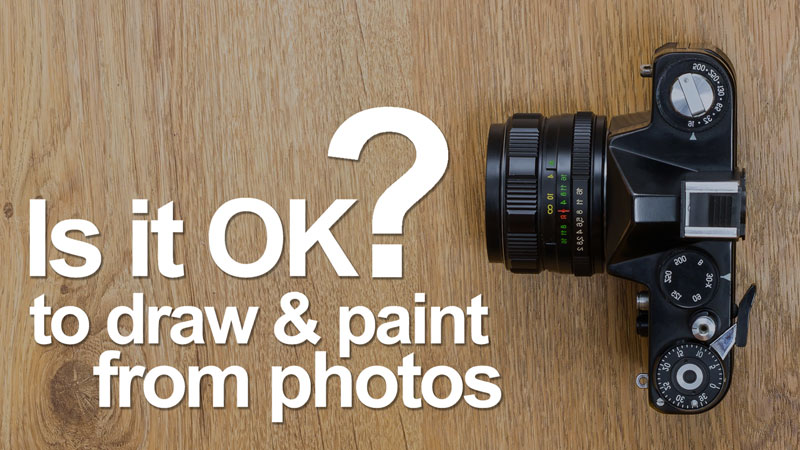
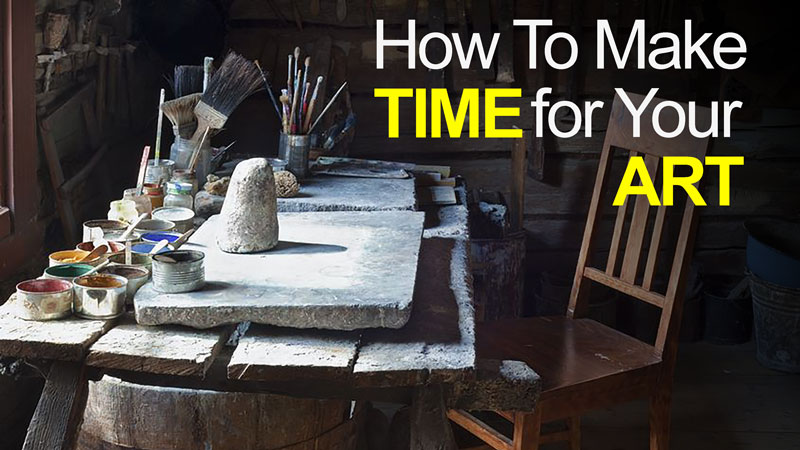
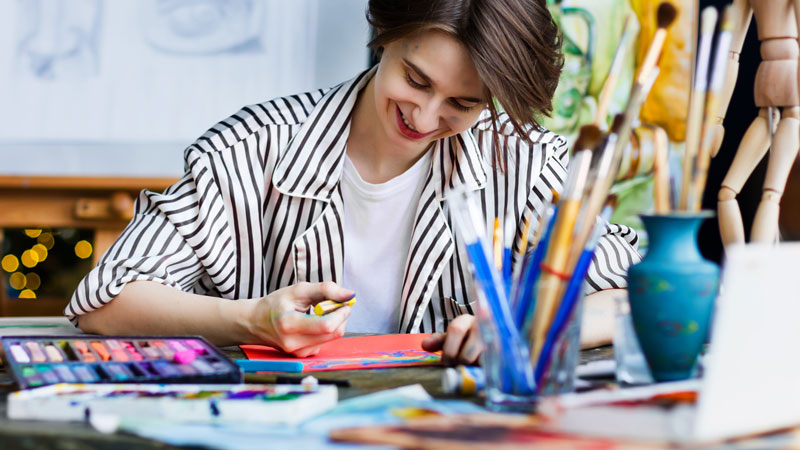
Thank you! This is very interesting and exciting!!
I decided to take an art class last year, and I thought I simply had gotten a bad teacher when he didn’t do demos and gave only a few explanations. He simply assigned work (“draw this!”) and said it was all wrong when the homework was turned in. I thought he must have misunderstood when I told him I was a complete beginner, but apparently this is more typical than I thought!
I quit his class because I figured I could learn as much by using my money to buy materials and just experimenting (which is basically what I was doing under him)…and I’m not usually the Conditional Learner type. I ran across VirtualInstructor while trying to find out the answers to my art questions, and I’ve learned more here than I did with him. Fun article.
ok now im 15 or 14.I need follow right step by step to learn art but idk where to start >.> give me tips :c
I’m definitely an observational learner, which is why the videos have been working so well for me. Thanks for the great info!
Thanks for this reminder. I began my art journey three months ago & definitely appreciate being able to watch you. I have taken the colored pencils, pastels & watercolor courses. Pan pastels & gouache are my favorite mediums by far. I have started substituting pan pastels in the regular pastel tutorials. It is so helpful to know what colors you are layering to achieve the values & mimicking the strokes. I look forward to the new graphite drawing course in March. Thank you for making this knowledge available to everyone.